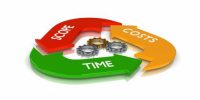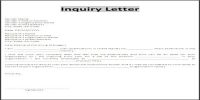Industry: An industry is a classification that refers to a group of companies that are related in terms of their primary business activities. In modem economics, there are dozens of different industry classifications, which are typically grouped into larger categories called sectors. Individual companies are generally classified into industries based on their largest sources of revenue. For example, an automobile manufacturer might have a small financing division that contributes 10% to overall revenues, but the company will still be universally classified as an automaker for attribution purposes.
The manufacturing or technically productive enterprises in a particular field, country, region, or economy viewed collectively, or one of these individually. A single industry is often named after its principal product; for example, the auto industry. Example:
- RMG Industry,
- Pharmaceutical Industry,
- Cement Industry, etc.
Identification of industry’s dominant features is very important for analyzing a company and competitive environment. The economic features of an industry can be given in the following list:
(Economic features and Examples types)
Market Size: Annual sales revenue and total volume
The scope of Competitive Rivalry: Local, regional, international, global.
Market Growth Rate: 2-3 percent annually
Stage in Life Cycle: Early development? Rapidly growth? Mature.
Number of Companies in Industry: Lots of small companies or few dominant ones.
Customers: How many buyers are there? Do they need large/small orders?
A degree of Vertical Integration: How prevalent is backward (suppliers) and forward integration (distributors, retailers).
Ease of Entry/Exit: Barriers to entering/leave the industry. EX: Moderate entry barriers exist in the form of capital requirements to construct a new plant of minimum efficient size (cost equals $10 million) and ability to build a customer base inside a 250-mile radius of plant etc.
Technology/Innovation: What is the pace of technological change in productions, process innovation, and new products introductions?
Product Characteristics: Goods/services highly differentiated, weakly differentiated or essentially identical? Buyers perceive little real difference from seller to the seller?
Scale Economies: What impact does large volume has on – purchasing, mfg., transportation, and marketing?
Experience Curve: What is the impact of learning and experience, in this industry?
Capacity Utilization: Do you only achieve low-cost production efficiency with high levels of capacity? EX: Manufacturing efficiency is highest between 90-100 percent of rated capacity; below 90 percent utilization unit costs run significantly higher.
Industry-Profitability: Is it above or below the norm? Do profits track the strength of demand for the industry’s products? Impact on prices?















